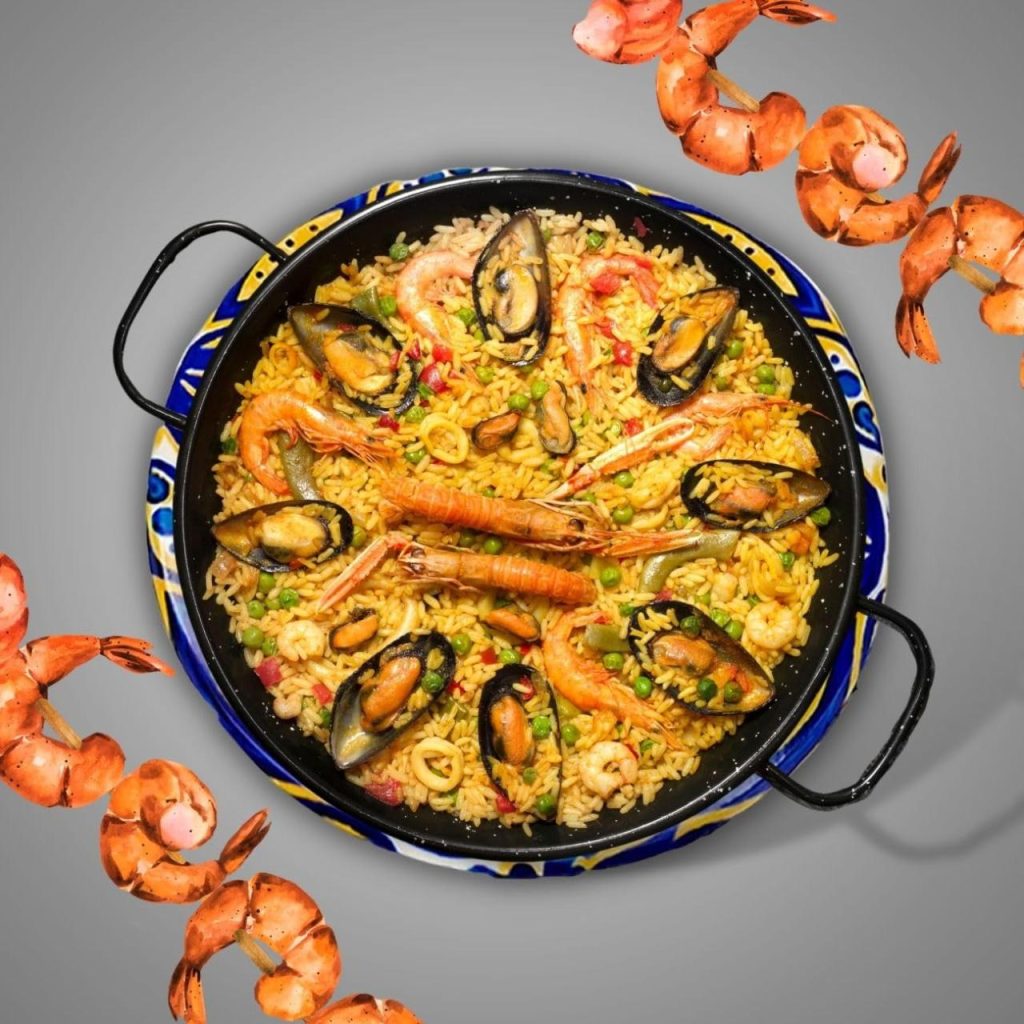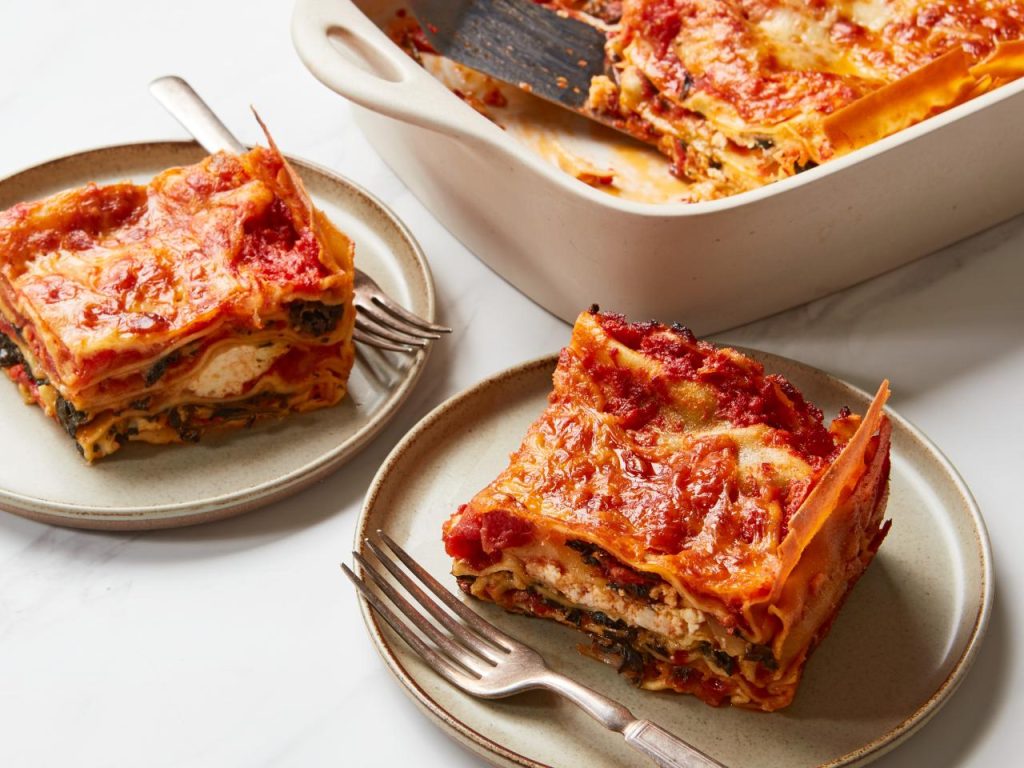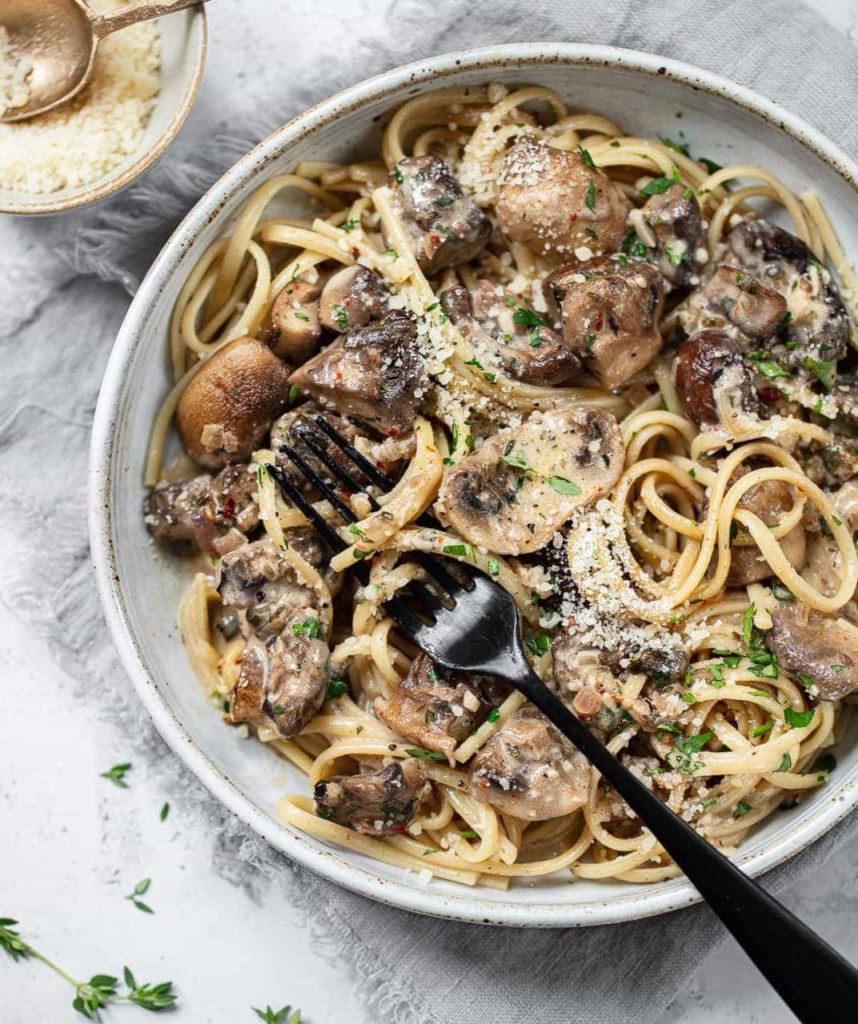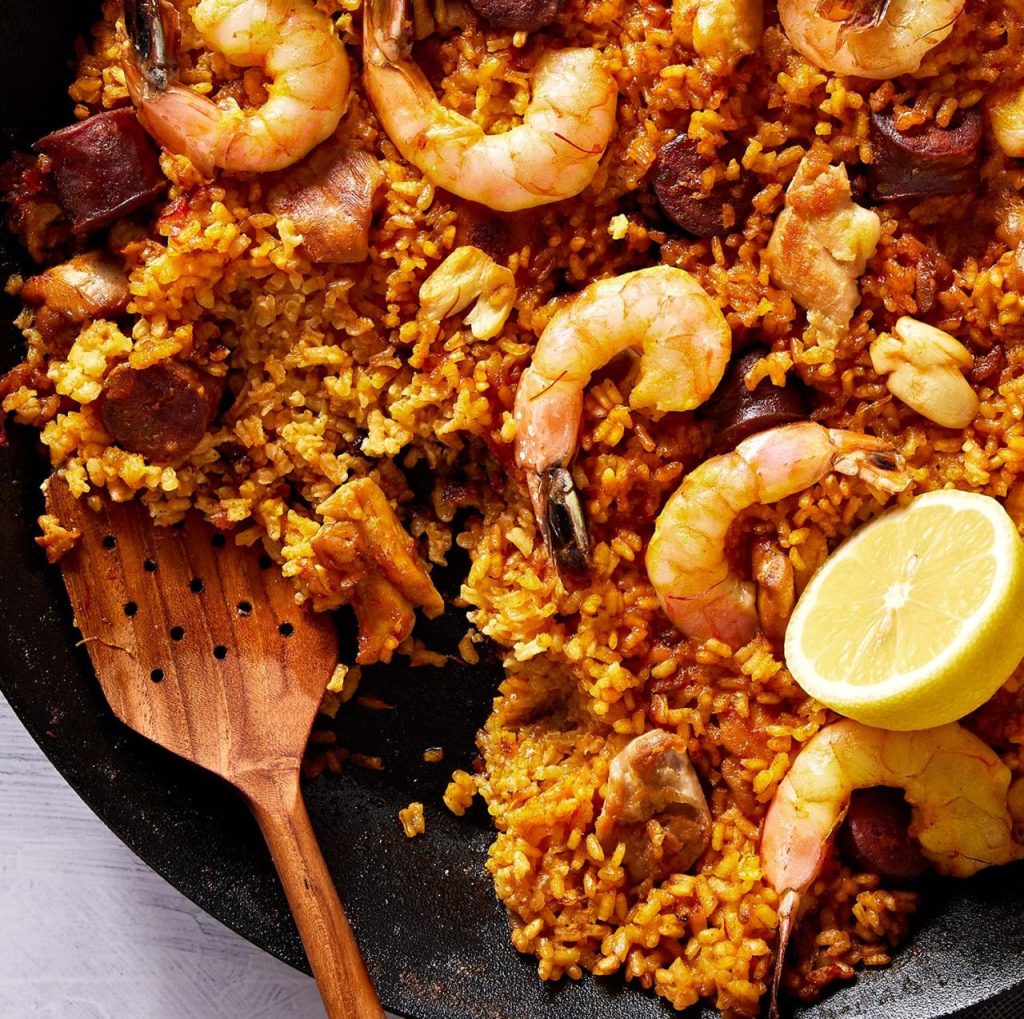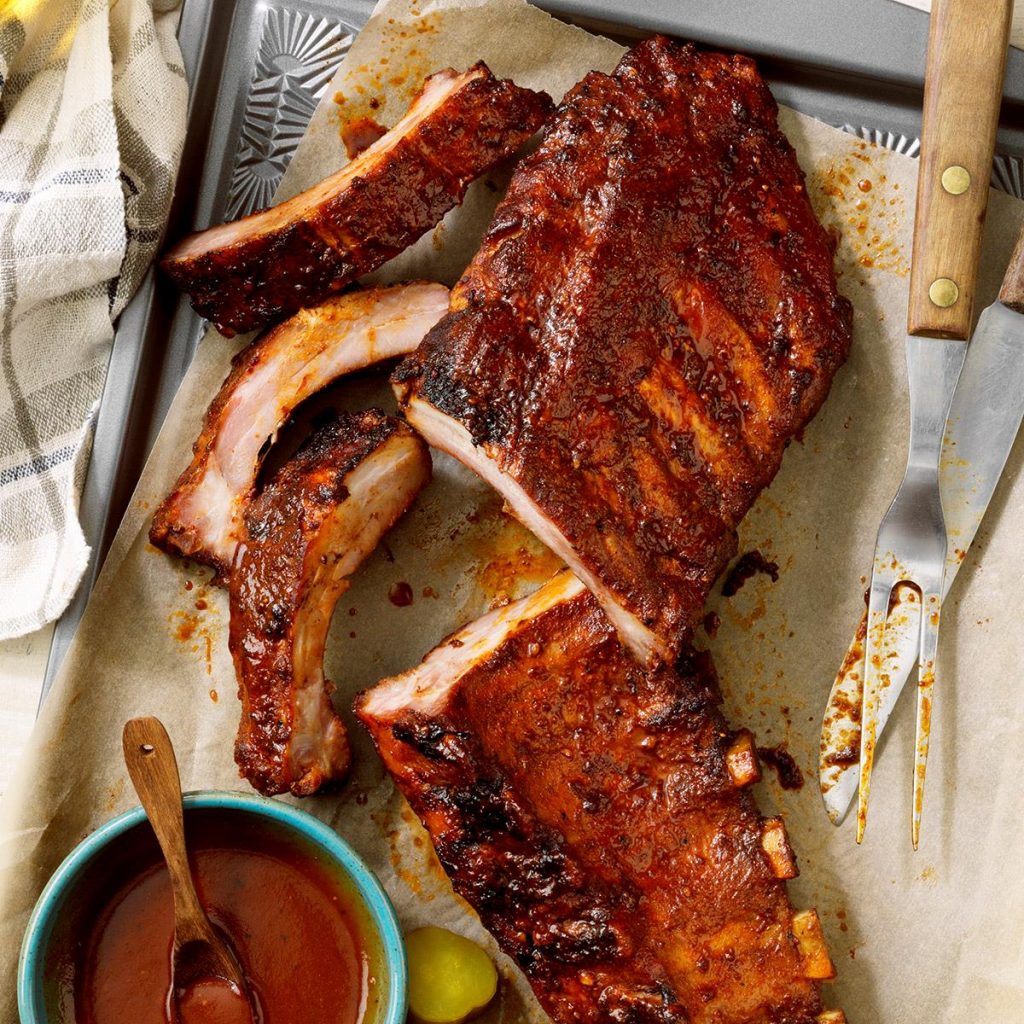Hello, fellow food lovers! Today, I’m thrilled to share with you my passion for a dish that has captured my heart and taste buds – the classic Italian Carbonara. Imagine this: creamy, rich sauce clinging to perfectly cooked pasta, punctuated by the salty crunch of pancetta. It’s a symphony of flavors that promises an unforgettable gastronomic experience.
Carbonara Recipe
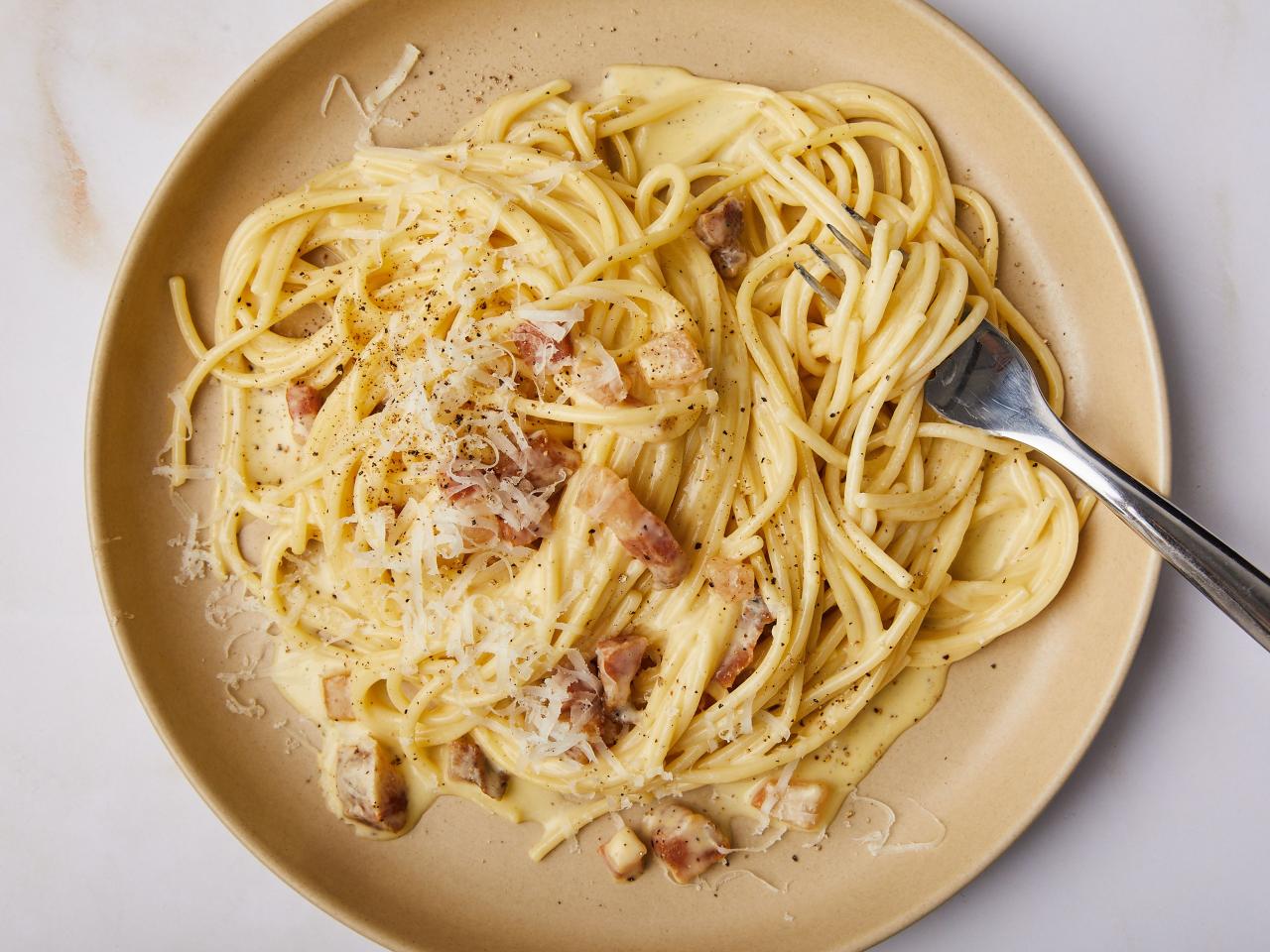
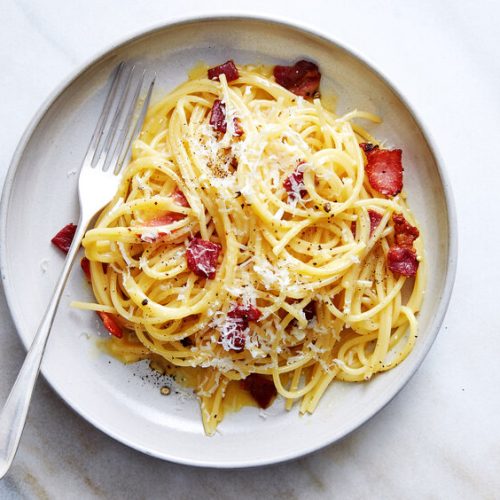
Carbonara recipe
Equipment
- 1 small sauté fried
- 1 dish
Ingredients
- ½ pound macaroni No. 6
- 30 g butter
- 2 tbsp olive oil
- 125 grams bacon cut into small pieces
- 6 tbsp white wine
- 4 egg yolks
- 5 tbsp parmesan leptotrimmeni
- 2 tbsp Parmesan leptotrimmeno
- 1 tbsp very finely chopped parsley
- Salt and freshly ground pepper
Instructions
- In a small sauté fried fine-cut bacon without oil or butter until crisp. Remove and store in a dish.
- Boil pasta in abundant salted water. As soon as the strain by keeping aside 1 glass makaronozoumo.
- Inside the pot to boil pasta, add the butter and oil and heat it thoroughly. Pour into the pasta pot and stir to voutyrothoun well.
- In a deep bowl, beat yolks omelettes. Add 6 tablespoons of wine and another 6 tablespoons makaronozoumo. Pour over the pasta in roasted bacon, stir. Immediately pour the yolk mixture to egg and stir quickly, not quickly grasp the egg, but to create a creamy sauce. Add grated cheese, stir last and serve the dishes.
- Sprinkle with freshly ground pepper and some chopped parsley.
- The carbonara at Greek restaurants and kitchens made by adding cream. True, but done with makaronozoumo Note. If you're in butter Blanch the pasta will add 1-2 cloves garlic, kavourdiste the well and then discard them. Then put through the pasta. The butter flavored by garlic.
Video
My Love Affair with Carbonara
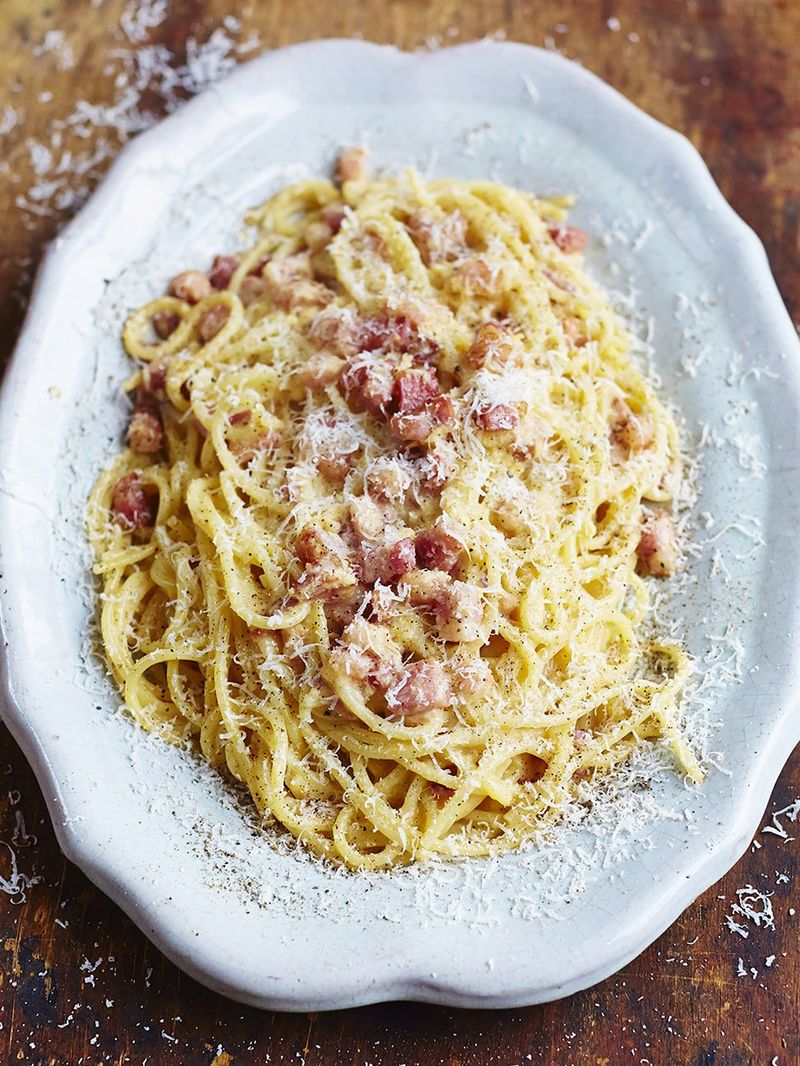
My first encounter with Carbonara was during a trip to Rome. I remember sitting in a small, bustling trattoria, the air filled with the tantalizing aroma of garlic and cheese. One bite of that creamy, savory pasta, and I was smitten!
About Carbonara
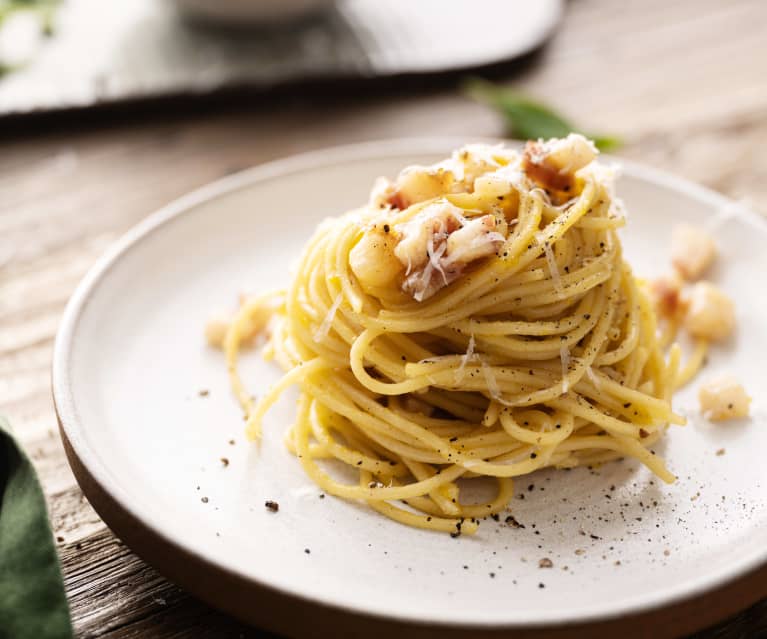
Carbonara is a classic Italian pasta dish that originates from Rome. It’s known for its simplicity and rich, creamy flavor profile. The traditional ingredients include egg, hard cheese (usually Pecorino Romano or Parmigiano-Reggiano), pancetta, and black pepper. The magic of Carbonara lies in the method of combining these ingredients. The hot pasta is mixed with the raw eggs and cheese, creating a smooth, creamy sauce without the need for cream. The pancetta adds a delightful crunch and salty contrast to the dish.
Cooking Tips for Perfect Carbonara
Cooking Carbonara may seem simple, but it requires a bit of finesse. Here are some tips I’ve picked up along the way:
- Quality Ingredients: The beauty of Carbonara lies in its simplicity, which means the quality of your ingredients will significantly impact the final result. Invest in good quality Pecorino Romano or Parmigiano-Reggiano and use a flavorful pancetta or guanciale.
- Pasta Cooking: Remember, al dente is the way to go! Overcooked pasta won’t hold up well against the rich sauce.
- Timing is Everything: The key to a creamy Carbonara is adding the egg and cheese mixture to the hot pasta at just the right time. Too early, and you risk scrambling the eggs; too late, and the sauce may not emulsify properly.
- Experiment with Flavors: While traditional Carbonara is a classic for a reason, don’t be afraid to add your own twist. Perhaps a sprinkle of red pepper flakes for heat, or a touch of lemon zest for brightness.
- Serving Immediately: Carbonara is best enjoyed immediately after it’s made. The sauce can thicken upon standing, so gather everyone around the table as soon as it’s ready!
Frequently Asked Questions
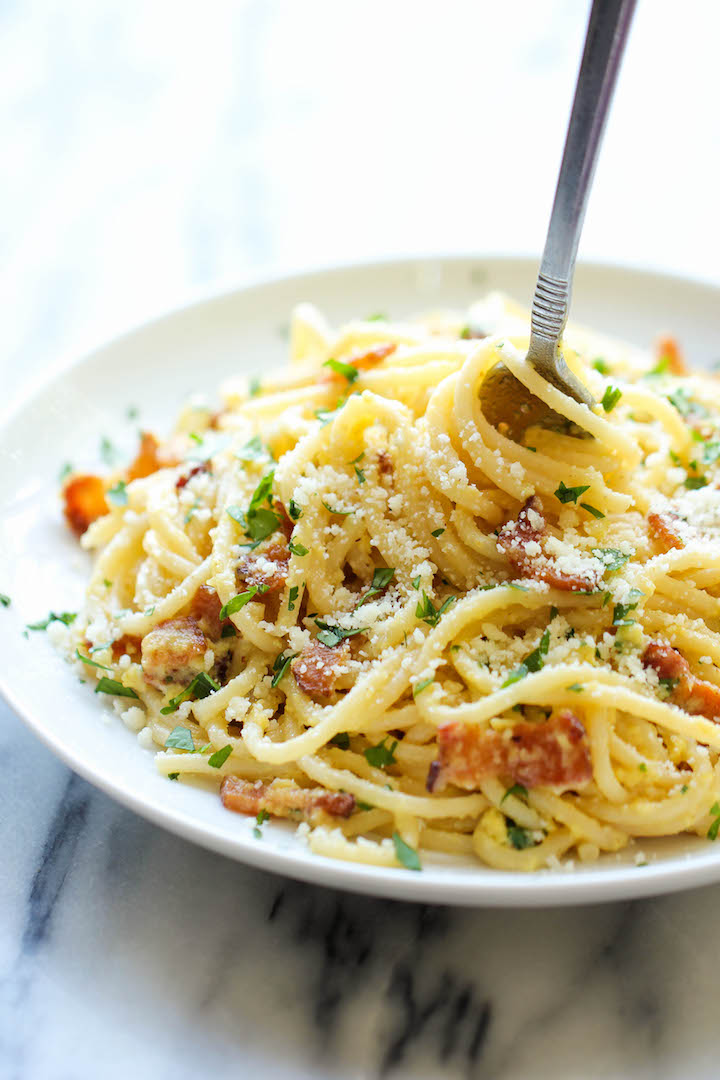
- “Can I use cream in my Carbonara?”: While some recipes do call for cream, traditional Carbonara relies on eggs and cheese for its creamy texture. But remember, cooking is all about personal preference, so feel free to experiment!
- “Can I substitute the pancetta?”: Absolutely! If you can’t find pancetta, guanciale or even regular bacon can be used.
- “What type of pasta should I use?”: Traditional Carbonara calls for spaghetti, but feel free to use any pasta shape you prefer. Just ensure it’s cooked al dente!
- “Can I make Carbonara ahead of time?”: Carbonara is best enjoyed immediately after it’s made. The sauce can thicken upon standing, so it’s not the best candidate for make-ahead meals.
- “What wine pairs well with Carbonara?”: A crisp white wine, such as a Verdicchio or a Trebbiano, pairs beautifully with Carbonara. The acidity of the wine cuts through the richness of the dish, creating a balanced flavor profile.
Serving Suggestions
Finally, let’s talk about serving your Carbonara. This dish is best enjoyed fresh from the pan, with a generous sprinkle of freshly ground black pepper and extra cheese. Pair it with a crisp white wine, and you’ve got yourself a meal fit for a king!
So, are you ready to embark on your own Carbonara adventure? Trust me, it’s a journey filled with delicious discoveries. Buon appetito!

